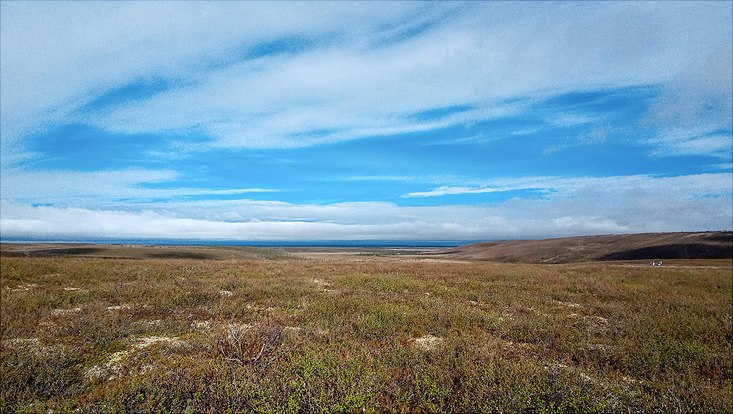European Research Council (ERC) grantsCOLDSPOT: € 2.14 million to research greenhouse gas reduction in the Arctic
12 November 2024, by AWI/ Newsroom editorial office

Photo: UHH/Voigt
Rising temperatures, vanishing ice mass, warmer water and air temperatures—the effects of the world’s climate changes are especially notable in the Arctic, where they also impact the biological and chemical cycles in the soil. Dr. Carolina Voigt will now use an ERC Starting Grant to research the complex processes involved and that release or capture greenhouse gases in permafrost regions.
It is above all greenhouse gases such as carbon dioxide, methane, and nitrous oxide, also known as “laughing gas,” that cause and exacerbate climate change. Some Arctic permafrost soil, however, can also absorb these gases, for example, methane (CH4) and laughing gas (N2O) from the atmosphere and at the very least partially balance out greenhouse gas emissions.
Absorbing atmospheric CH4 takes place primarily in somewhat dry soils in the Arctic, which, in terms of surface area, make up a large portion of the region, thus serving as CH4“coldspots.” “So far, however, we know too little about natural greenhouse gas reduction in the Arctic or the complex biological and chemical mechanisms driving it,” explains Voigt. The biogeochemist would like to change that with her COLDSPOT project and is now being funded by the European Research Council (ERC) through a Starting Grant, which she applied for together with the Alfred Wegener Institute Helmholtz Centre for Polar and Marine Research—AWI (as a guest institution) and the University of Hamburg.
Identifying mechanisms
“I would like to study to what extent the Arctic is also important for absorbing greenhouse gases and, contrary to traditional opinion, whether there are complicated temporal patterns for the absorption of CH4 and N2O driven by the functions of plants and microorganisms,” says Voigt, who is currently a researcher at the Institute of Soil Sciences at the University of Hamburg. “We want to find out when, where, and why Arctic soils act as methane and laughing gas sinks and identify those mechanisms that form the basis for the absorption of greenhouse gases in the Arctic.”
To do so, Voigt will work together with permafrost researchers from the AWI in Potsdam and the University of Hamburg. They will take high-resolution, laser-based measurements of the CH4 and N2 soil samples at locations in Canada, Greenland, and Finland and then combine these with microbial studies and statistical models. In this way, they will proceed from the microbial scale through soils and plant processes and up to ecosystems.
€2.14 million for simulation experiments
To improve process-based models for the greenhouse gas budget in the Arctic, simulation experiments in cutting-edge climate chambers will be used to collect data that reveal how greenhouse gas absorption in Arctic soils is influenced by environmental and local factors such as temperature, moisture, and nutrient balance. The ERC has granted Voigt and her team €2.14 million until the end of January 2030 for this project.


